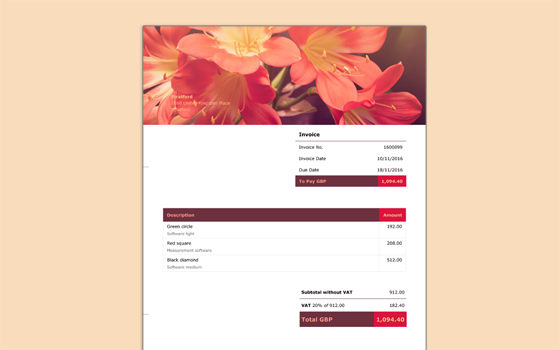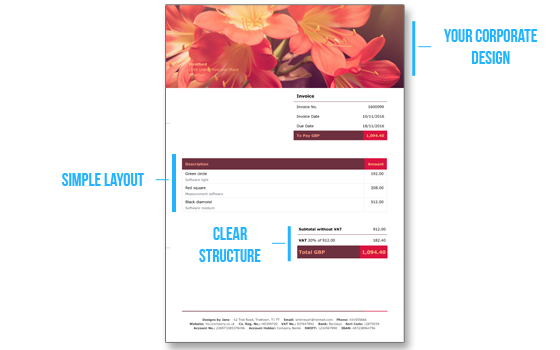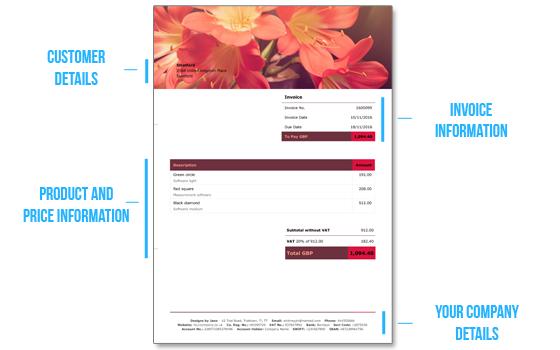Beautiful design is unique and personalised but also expresses a brand. This applies to the traditional forms of marketing for your business such as website, flyers, and emails, but also to your invoices.
Because they’re an important part of your communication with your customers, you should take into consideration to create a design that is professional and represents the image you envision for your business.

Here, we’ll cover a few things you should keep in mind when designing your invoices.
How to invoice professionally
There are three important points to consider for invoice design:
1. Structure your invoice clearly
In the structure of your invoice, you should take the usual elements into consideration and follow the basic guidelines. For example, customer information is generally in the upper right or left sides, while details about the product or service should be placed centrally.
Your customer will thank you because this makes it easier for them to quickly locate the information they need in order to pay the invoice.
2. Use a simple layout
Unicorn stickers, neon text, and size 64 all have their merits but are generally out of place on a professional invoice. Using a simple layout will help you come across as a professional and your invoices be taken seriously by your customers.
3. Stay true to your style
You’ve probably heard of corporate design. Its aim is to increase customer recognition of the company brand through a uniform style and design.
So it goes without saying that with this in mind, all your invoices should include your company logo, match your business image, and also be in line with any marketing materials.

Note: if you use Debitoor invoice templates, you have the option to choose between 6 professional and customisable designs using the invoice designer.
How to structure your invoice clearly
An important element in the overall design of your invoice is the structure. The following points are key:
1. The header and footer: company data
The header and footer of your invoices should clearly list the important contact information about your customer contact details and your company details. These include: name, address, contact info, business registration number, VAT number, bank account details, etc.
2. Top right: invoice information
Details about the invoice itself, including the date of issue, the invoice number, and the payment due date, should all be listed in this section.
3. Centre of the invoice: product details
Likely the most important part since it is the purpose of an invoice: details about the product/service you’re selling. Remember to separate out the price and provide the price per unit, the net price, a clear VAT rate, and the gross price if applicable.

Note: Unlike Word and Excel invoice templates, in Debitoor invoice software these fields are all easy to fill out. Our invoice designer allows you to add the personal touches and branding mentioned above in just a few clicks.
